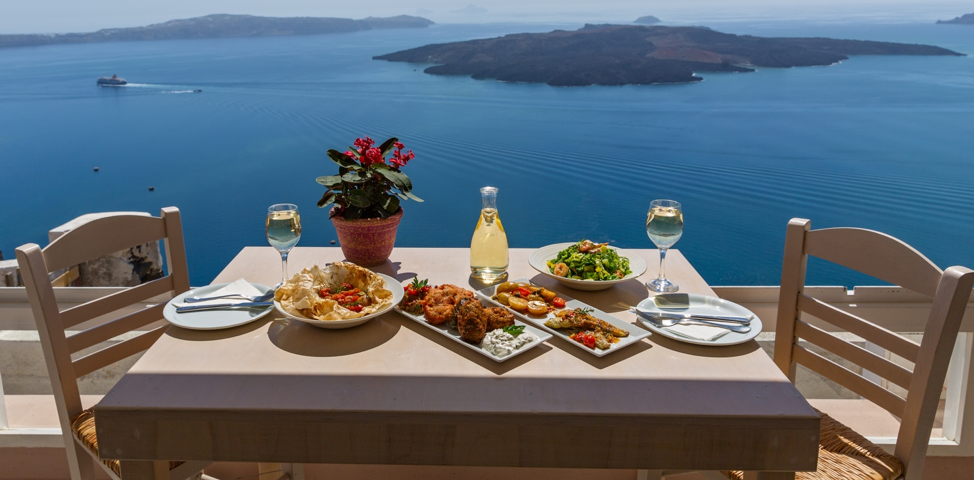From the rugged mountains of Sardinia, Italy, to the sunny shores of Okinawa, Japan, traditional cultures around the world have a lot to teach us about good health and well-being. Though health through heritage has been a guiding mission at Oldways for the past 27 years, geographers and anthropologists have renewed fervor over this concept by spotlighting places the worlds longest-lived people call home. These Blue Zones, which are spread between Asia, Europe, Latin America, and North America, may be far apart both geographically and culturally, but they share very important similarities that play a central role in longevity: lifestyle and diet.
The eating behaviors of communities within the Blue Zones have been largely uninfluenced by westernization, and all follow the same basic principles: locally produced whole foods, plentiful vegetables and legumes, and highly plant-based diets. In turn, these regions hold the highest concentration of centenarians, or individuals living beyond the age of 100. Additionally, many remain physically active and disease-free into their 90s and beyond.
No matter where you live, Oldways traditional diet pyramids are the perfect way to bring these Blue Zone eating patterns into your own community. While the cuisines of these regions might seem strikingly different from one another, the overall diet and lifestyles follow a similar pattern.
Traditional Asian Diets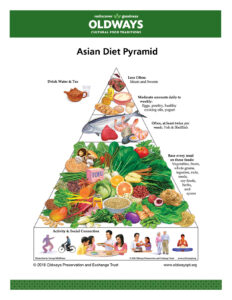
The Blue Zone in Okinawa, Japan is a beautiful example of some of the healthiest traditions of the Asian Heritage Diet. Okinawans have adopted the Chinese concept that food is nuchi gusui, meaning medicine for life, with properties that can help to prevent and treat illnesses and maintain health. Key eating habits include a high consumption of local vegetables, soybeans, seaweed, sweet potatoes, and turmeric, and a low intake of salt. Okinawans also practice hara hachi bu: the habit of eating until one is 80% full, rather than overeating.
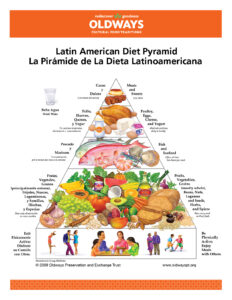 Traditional Latin American Diets
Traditional Latin American Diets
While the American diet threatens to influence the health of many populations in Central America, the Blue Zone on the sunny Nicoya Peninsula in Costa Rica has sustained the traditional Latin American Diet. Healthy traditional dishes consisting of rice, beans, corn, squash, chicken, and fish are commonplace in this region, with infrequent use of processed foods. People in this region believe in the plan de vida, or reason to live, which keeps elderly people engaged and active. Strong family and social networks promote well-being within the community.
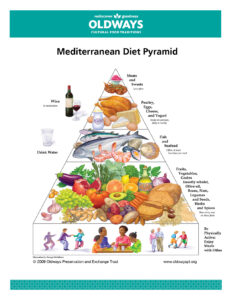 Traditional Mediterranean Diets
Traditional Mediterranean Diets
The isolated Ogliastra Region of Sardinia, Italy is home to almost 10 times more centenarians per capita than the United States. The communities in this Blue Zone follow a traditional Mediterranean Diet, consisting largely of vegetables, healthy oils, whole grains, fruits, and legumes, with meat reserved for Sundays and special occasions. Goat’s milk and sheeps cheese from grass-fed animals provide the calcium needed for maintaining healthy bones. In this mountainous region, daily exercise is an inevitable part of life, and neighbors and families provide a close-knit social network.
Another example of the traditional Mediterranean Diet can be found in Ikaria, Greece. As in Sardinia, Ikarians regularly consume whole grains, fruits, legumes, fresh herbs, beans, vegetables, olive oil, and goat’s milk from pasture-raised animals. Gardening and the mountainous terrain allow for regular exercise, and friends and neighbors gather daily to share stories and laughter over homemade wine or herbal tea.
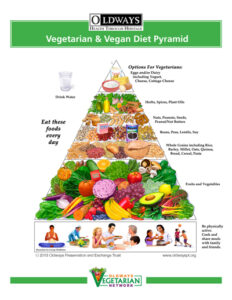 Vegetarian and Vegan Diet
Vegetarian and Vegan Diet
Blue Zones can exist anywhere even in the U.S.! The Blue Zone in Loma Linda, California is comprised of a Seventh-day Adventist community that follows a simple and traditional life, isolated culturally from a variety of modern aspects of the Western world. A majority of members follow a vegetarian diet, ensuring adequate intake of healthy fats from nuts, plant oils, and avocados. A small percentage of individuals follow a pescatarian diet, eating seafood in moderation. Fresh fruit is a staple of daily life, as are vegetables, legumes, and whole grains. The community has a strong social network and shared health practices including regular exercise, a weekly day of rest, and abstinence from smoking and drinking.
If you’re interested in healthy eating, join the Make Every Day Mediterranean Club Facebook group for additional information and support.


